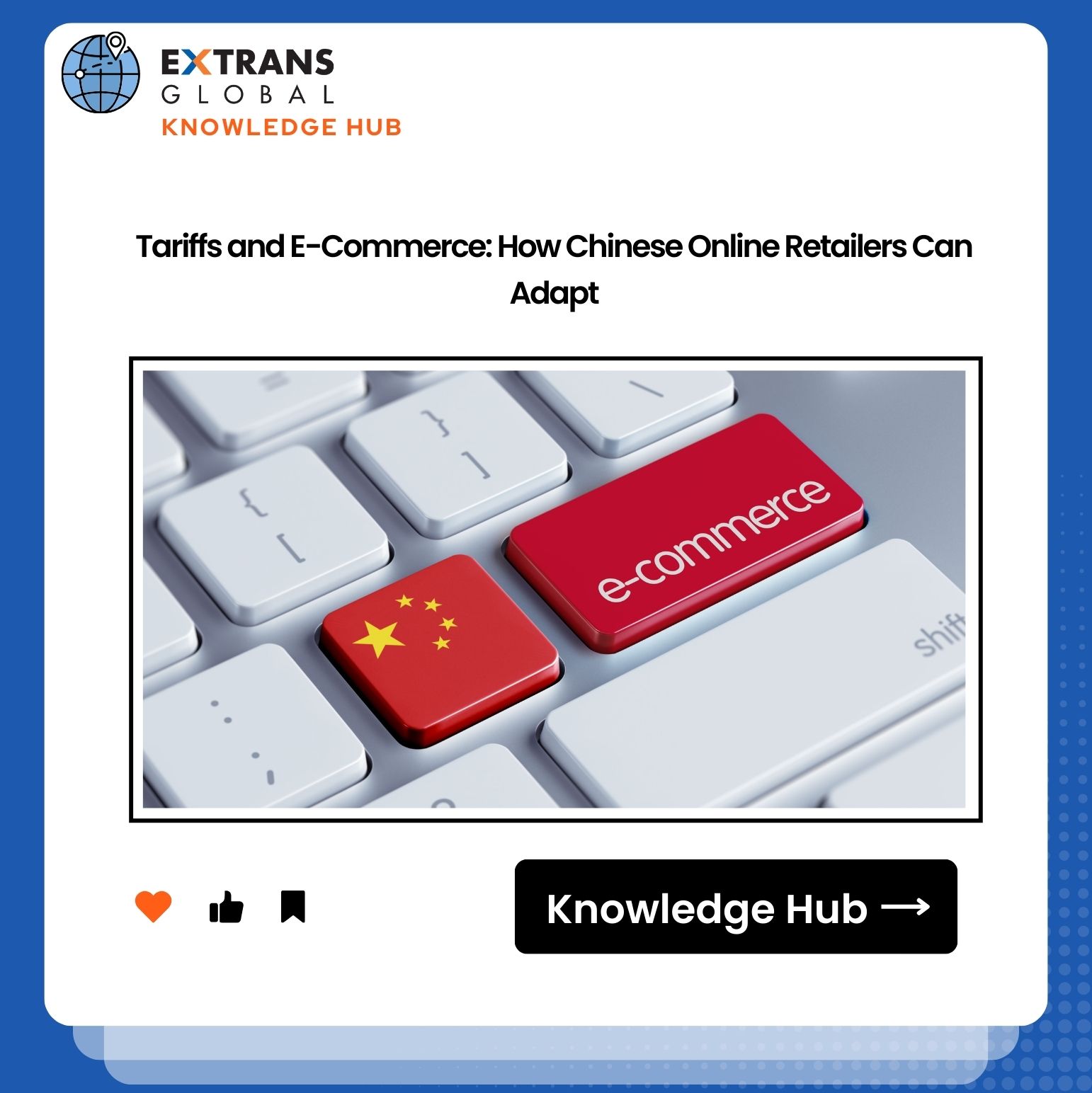Tariffs and E-Commerce: How Chinese Online Retailers Can Adapt
Tariffs and E-Commerce: How Chinese Online Retailers Can Adapt
Introduction
The global e-commerce market is booming, and Chinese online retailers play a pivotal role in cross-border trade. However, rising tariffs imposed by various countries—particularly the U.S. and EU—pose significant challenges. These import taxes increase costs, disrupt supply chains, and force businesses to rethink their strategies.
For Chinese e-commerce sellers, adapting to tariffs is no longer optional—it’s essential for survival and growth. This article explores how tariffs impact Chinese online retailers and provides actionable strategies to stay competitive in an evolving trade landscape.
How Tariffs Affect Chinese E-Commerce Businesses
1. Higher Costs for Cross-Border Sales
-
Many countries impose additional duties on Chinese-made goods, increasing product prices.
-
Retailers must either absorb the extra costs (hurting profits) or pass them to customers (risking lower sales).
2. Supply Chain & Logistics Challenges
-
Customs delays due to increased inspections and paperwork.
-
Higher shipping costs as logistics providers adjust to trade restrictions.
3. Reduced Competitiveness in Key Markets
-
Chinese products may become less affordable compared to local or tariff-exempt alternatives.
-
Consumers may shift to domestic brands or sellers from non-tariff countries (e.g., Vietnam, Mexico).
6 Strategies for Chinese E-Commerce Retailers to Adapt
1. Shift to Overseas Warehousing & Fulfillment
-
Store inventory in destination countries (e.g., U.S. Amazon FBA, EU fulfillment centers) to avoid import taxes on every order.
-
Use bonded warehouses in free trade zones (e.g., Hong Kong, Singapore) to defer tariffs until products are sold.
2. Explore Alternative Markets with Lower Tariffs
-
Expand into regions with favorable trade policies, such as:
-
Southeast Asia (via Lazada, Shopee)
-
Africa (Jumia, Kilimall)
-
Latin America (Mercado Libre)
-
-
Target countries with free trade agreements (FTAs) with China, like RCEP members (ASEAN, Japan, South Korea).
3. Optimize Product Pricing & Offer Value
-
Bundle products to maintain perceived value despite higher prices.
-
Offer free shipping or discounts to offset tariff-related price hikes.
-
Focus on high-margin, low-weight items to minimize shipping and duty costs.
4. Localize Production or Sourcing
-
Set up factories in tariff-exempt countries (e.g., Vietnam, Malaysia, Mexico) to bypass trade restrictions.
-
Partner with local manufacturers in target markets to reduce import dependency.
5. Leverage Dropshipping & Lightweight Business Models
-
Use dropshipping to avoid holding inventory in high-tariff regions.
-
Sell digital products or services (e.g., SaaS, e-books) that aren’t subject to tariffs.
6. Improve Customs Compliance & Logistics Efficiency
-
Work with experienced freight forwarders to classify products under lower-duty HS codes.
-
Pre-clear customs to reduce delays and unexpected fees.
-
Use AI-powered logistics tools to optimize shipping routes and costs.
Case Study: How Shein & Temu Handle Tariffs
Shein’s Strategy:
-
Uses small-package shipping (under $800 to the U.S. via de minimis rule) to avoid tariffs.
-
Keeps inventory decentralized to reduce reliance on Chinese exports.
Temu’s Approach:
-
Partners with U.S. warehouses to speed up delivery and minimize duties.
-
Absorbs some tariff costs to keep prices ultra-competitive.
Conclusion: Staying Competitive Despite Tariffs
Chinese e-commerce retailers can’t control tariffs, but they can control how they respond. By diversifying markets, optimizing logistics, and adjusting pricing strategies, businesses can minimize costs and maintain growth.
Key Takeaways:
✅ Use overseas warehouses to reduce tariff exposure.
✅ Expand into emerging markets with lower trade barriers.
✅ Optimize pricing & product selection to stay competitive.
✅ Improve customs efficiency to avoid delays and extra fees.
Need Help Navigating Tariffs for Your E-Commerce Business?
If you're a Chinese online retailer looking for tariff-friendly selling strategies, consult trade experts or logistics partners to find the best solutions.
Adapt smartly—thrive globally!

top




